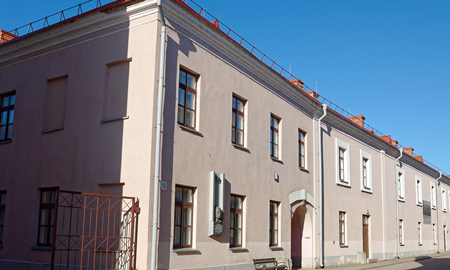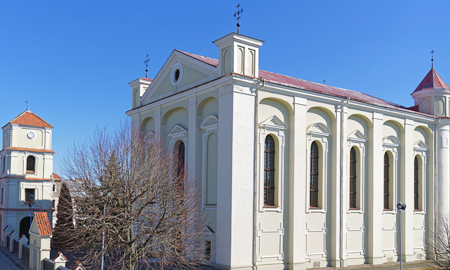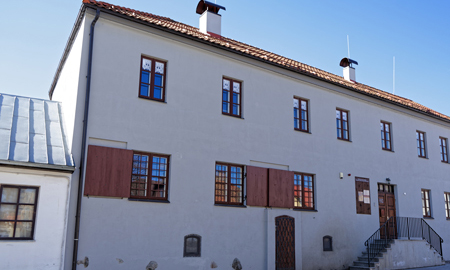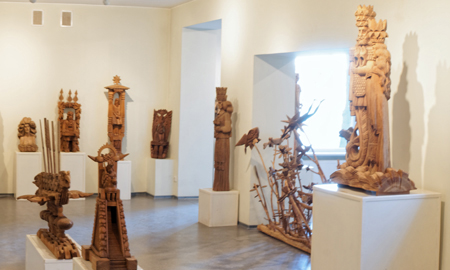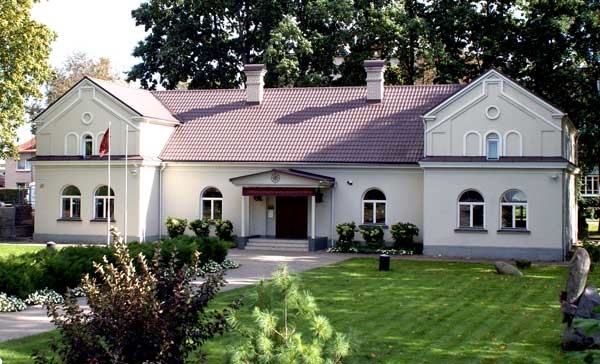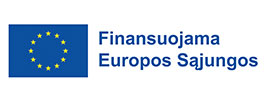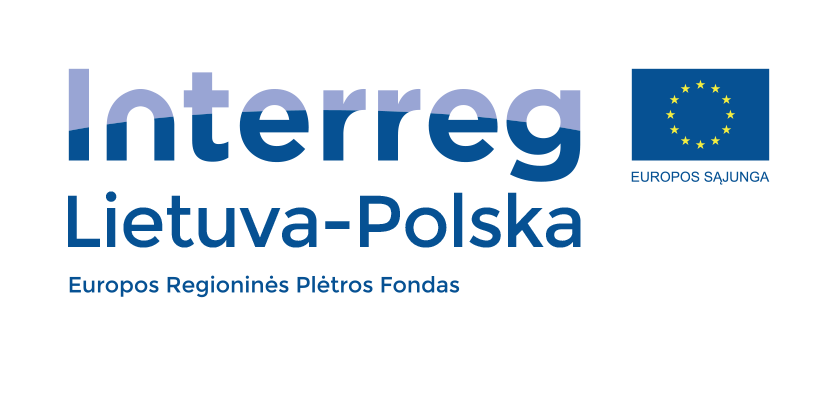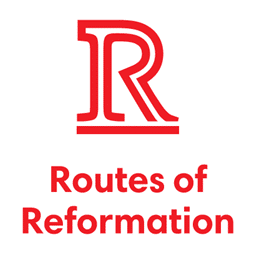Kėdainių krašto muziejus (Didžioji g. 19)
Iki gegužės 12 d. veiks paroda „Keliaujančios Ukrainos namų ikonos“. Parodoje eksponuojamos XIX a. – XX a. pradžios įvairių Ukrainos regionų: Podolės, Siverščinos, Padnieprės, Polesės, Čerkasų srities, Huculščina gyvenamuosius interjerus puošusios ikonos. Tai Dievo Motinos su Kūdikiu, arkangelo Mykolo ir šventųjų atvaizdai, buvę neatsiejama kasdienio gyvenimo dalimi, svarbių virsmų – gimimo, krikštynų, vestuvių, laidotuvių – liudininkai. Sakralieji atvaizdai Ukrainoje būdavo apgaubiami puošniais rankšluosčiais ir įkurdinami garbingiausioje namų vietoje – maldai ir svečiams skirto kambario gražiajame kampe – božnicoje. Parodoje dominuoja šventųjų raitelių-kovotojų atvaizdai, įkūnijantys pergalės prieš melą, blogį ir bjaurastį idėją. Savitą kelioninių altorėlių kūrimo tradiciją mena trys išskirtiniai parodos objektai – trijų dalių atveriamosios ikonos. Ikonos atkeliavo iš Radomyšlio (Žytomyro srities, Ukrainoje) pilyje įkurto Ukrainos namų ikonų ir senienų muziejaus „Ukrainos dvasia“. Jo steigėja ir kolekcijos savininkė – gydytoja, politikė, medicinos ir filosofijos mokslų daktarė Olga Bogomolec (Ольга Богомолець). Unikaliame namų ikonų muziejuje sukaupta per 5000 vienetų XV–XXI a. eksponatų. Karo metu kilus pavojui Ukrainos kultūros ir meno vertybėms, siekta dalį jų perkelti į Lietuvą. Iš Radomyšlio pilies kūrinių išgabenimu rūpinosi kolekcijos savininkė O. Bogomolec ir muziejaus direktorius Jurijus Rudnickis (Юрій Рудницький). Lietuvoje iš Ukrainos atkeliavusias ikonas globoja Anykščių krašto garbės ambasadorius Ukrainoje Virginijus Strolia ir Anykščių A. Baranausko ir A. Vienuolio-Žukausko memorialinis muziejus. Eksponuojami 26 dailės kūriniai yra Ukrainos namų ikonų ir senienų muziejaus „Ukrainos dvasia“ sakralinio meno eksponatų rinkinys. Paroda organizuojama bendradarbiaujant su A. Baranausko ir A. Vienuolio-Žukausko memorialinis muziejus ir Замок-Музей Радомисль/ Radomysl Castle-Museum. Parodos organizatorius Lietuvoje – A. Baranausko ir A. Vienuolio-Žukausko memorialinis muziejus. Lankymas mokamas įsigyjant Kėdainių krašto muziejaus lankytojo bilietą.

Nuo gegužės 15 d. veiks paroda „Gyvųjų miestas/Mirusiųjų miestas“ . Tai Roberto Wilczyńskio fotografijų projektas. Naudodamasis fotoaparato dvigubos ekspozicijos nustatymu, menininkas sujungia archyvines Varšuvos gete darytas žmonių ir vietų nuotraukas (iš Varšuvos geto muziejaus rinkinių) su dabartiniais Varšuvos vaizdais ir taip sugrąžina bei parodo tą dramatišką miesto istorijos laikotarpį. 1939 m. rugsėjo 1 d. Trečiasis reichas, nepaskelbęs karo, užpuolė Lenkiją. Po daugiau nei dviejų savaičių, rugsėjo 17 d., SSRS kariuomenė, įgyvendindama slaptą Lenkijos Respublikos teritorijos padalijimo paktą, kirto rytinę jos sieną. Rugsėjo 28 d. Lenkijos sostinė Varšuva po tris savaites trukusių kovų ir apgulties kapituliavo. Prieš Antrąjį pasaulinį karą joje gyveno apie 1 300 000 žmonių, iš kurių bene trečdalis buvo žydai. 1939 m. spalį okupantai pradėjo sistemingai persekioti žydus. 1940 m. spalio pradžioje vokiečiai paskelbė Varšuvoje steigiantys žydų rajoną (getą). Getas nuo vadinamosios arijų dalies atskirtas trijų metrų aukščio mūrine tvora. 1942 m. liepos 22 d. pradėta vadinamoji Didžioji akcija, t. y. žydų deportavimas iš Varšuvos geto. Iki 1943 m. rugsėjo 21 d. Treblinkoje buvo nužudyta 270 tūkst. iš Varšuvos geto atvežtų žydų. Balandžio 19 d. Varšuvos gete prasidėjo sukilimas – pirmasis miesto gyventojų sukilimas prieš vokiečius okupuotoje Europoje. 1948 m., sukilimo penkmečio proga, intensyvių mūšių gete vietoje atidengtas paminklas Varšuvos geto didvyriams, sukurtas žydų skulptoriaus Natano Rappaporto ir architekto Leono Mareko Suzino. Šis monumentas tapo Varšuvos geto kalinių gyvenimo, kančios, kovos ir mirties simboliu. Kadangi per Antrąjį pasaulinį karą beveik visa Varšuvos žydų bendruomenė buvo išžudyta, o jos materialusis ir kultūros paveldas sunaikintas, geto ir jame uždarytų žmonių atvaizdai Roberto Wilczyńskio fotografijose matomi netvarių buvimo pėdsakų pavidalu. Jie įsineria į šiuolaikinio miesto audinį tarsi prisiminimai, įsišakniję į nebeegzistuojančio miesto erdves, ir reikalauja, kad būtų pastebėti ir nepamiršti… Stenduose esančias fotografijas papildo parinkti dokumentiniai tekstai – paimti iš dienoraščių ir prisiminimų (pvz., Mary Berg, Janinos Bauman), kuriuose užfiksuota 1940–1942 m. Varšuvos geto gyventojų kasdienybė, kančia ir mirtis. Parodos autorius: Robert Wilczyński – lenkų fotomenininkas, fotoreporteris. Gyvena ir kuria Varšuvoje. Vienas mėgstamiausių jo kūrybos išraiškos būdų – daugiasluoksnės ekspozicijos technika, kurią naudojo ir kurdamas parodą „Gyvųjų miestas / Mirusiųjų miestas“. Yra surengęs personalinių parodų bei dalyvavęs grupinėse parodose Varšuvoje, Vienoje, Berlyne, Niujorke, Tokijuje ir kitur.

Gegužės 18 d. Tarptautinė muziejų diena. Nemokamas muziejaus lankymas nuo 10 iki 17 val.
Gegužės 26 d. nuo 10 iki 15 val. nemokamas muziejaus lankymo sekmadienis. Veiks nuolatinės ekspozicijos ir Roberto Wilczyńskio fotografijų projekto paroda „Gyvųjų miestas/Mirusiųjų miestas“.

Daugiakultūris centras (Peismilgio g. 12B )
Gegužės 7 d. 17.30 val. renginys, skirtas Spaudos atgavimo, kalbos ir knygos dienai. Renginio programoje: Vaido Banio, Kėdainių krašto muziejaus muziejininko, pranešimas „Spaudos draudimo laikai Kėdainių regione“; Gražiausių lietuviškų Kėdainių įmonių pavadinimų konkurso nugalėtojų pasveikinimas; Mokinių konkurso „Mano įmonė – lietuviškai“ nugalėtojų pasveikinimas; Modernaus lietuviško folkloro grupės LIBERTE koncertas. Organizuoja Kėdainių rajono savivaldybė ir Kėdainių krašto muziejus. Renginys nemokamas.

Gegužės 10 d. 17 val. Koncertas „Senosios Europos tautų melodijos“. Atlikėjai: Renata Dubinskaitė (balsas), Chris Ruebens (gitara, balsas) Remis Rančys (saksofonai, fleitos, melodionas, perkusija). Šis koncertas – tai muzikinė kelionė po senąjį žemyną, susipažįstant su skirtingoms tautoms būdingomis melodijomis ir dainose perduodamais pasakojimais apie meilę ir karą, gyvenimo džiaugsmus ir vargus, tikėjimą. Programoje senoji ir liaudies muzika interpretuojama pasitelkiant skirtingų stilių jungtis. Bilieto kaina 7 Eur., senjorams ir mokiniams – 5 Eur.

Gegužės 11 d. 14 val. Tapytojų grupės „Mėlynas menas“ parodos „Meno horizontai“ atidarymas ir choro iš Kauno r. Domeikavos „Versmė“ koncertas. Renginys nemokamas. Paroda bus eksponuojama iki birželio 5 d.

Gegužės 15 d. 14.30 val. Kėdainių Šv. Juozapo parapijos Misijų savaitės renginys – susitikimas su II-ojo amžiaus universiteto studentais, menininkais, žurnalistais. Tema „Kūrėjo bendrininkas“. Renginys nemokamas.
Gegužės 18 d. 16 val. Muzikinis spektaklis „ESU IEVA, ESU MAGDALENA“, pagal A. Ruseckaitės mažųjų novelių ir eilėraščių knygą „Vienišųjų vyninė“ . Dalyvauja aktorė Daiva Škelevaitė, pianistė Ina Vaičienė. Bilietus galima įsigyti internetu: bilietai.lt
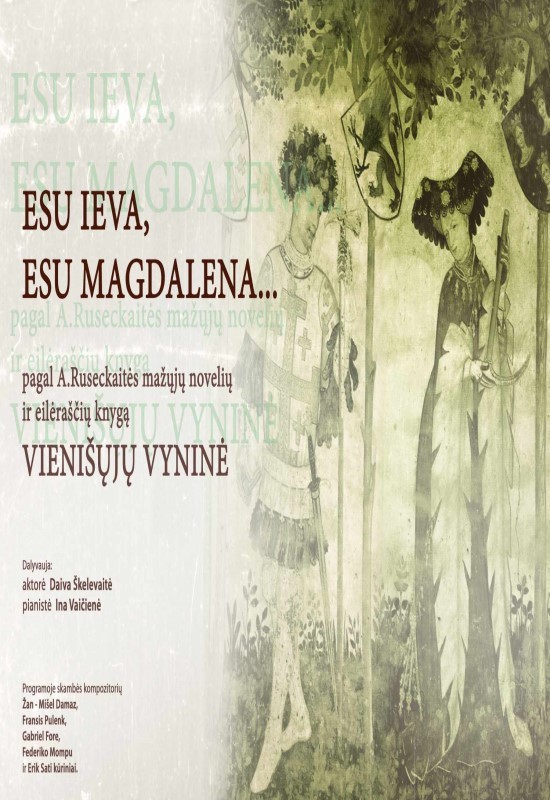
Gegužės 22 d. 17 val. Violetos Tapinienės knygos „Susigrąžinto laiko blyksniai“ pristatymas. Renginys nemokamas.
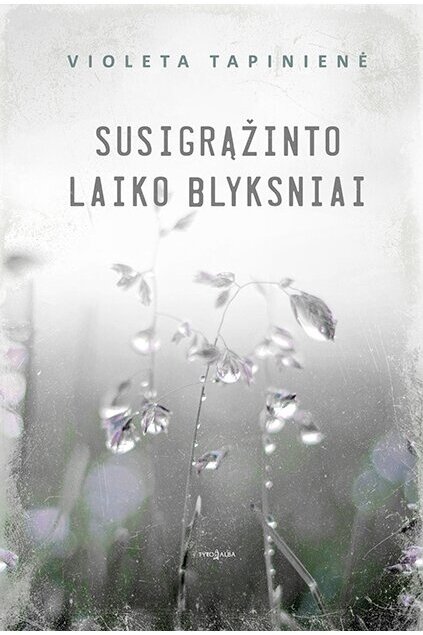
Gegužės 23 d. 17.30 val. Kėdainių muzikos mokyklos mokinių, grojančių tautiniais instrumentais koncertas „Pavasario melodijos“. Renginys nemokamas.

Gegužės 26 d. nuo 10 iki 15 val. nemokamo lankymo sekmadienis. Veiks nuolatinė ekspozicija „Ich bin Keidaner“.

Tradicinių amatų centras Arnetų name (Radvilų g. 21)
Gegužės 6, 13, 20, 27 d. tęsiamos „Vytinių juostų dirbtuvės” 1 gr. 15- 17 val. , 2 gr. 17- 19 val.
Gegužės 27 d. 17 val. vyks Vytinių juostų dirbtuvių uždarymas.
Iki gegužės 17 d. veiks Kėdainių krašto liaudies menininkų paroda „Tradicijų vedami“. Lankymas nemokamas darbo dienomis nuo 8 iki 17 val. Parodoje pristatoma: tautodailininkės, tradicinių amatų meistrės Loretos Steponavičienės pintinės ir vytinės juostos, medžiaginiai žaislai. Kartu su mama eksponuojamos dukros Lauros Steponavičiūtė pintinės juostos. 2019 m. Lauros pintines juostas įvertintos ,,Sidabro vainikėliu”. Tradicinių amatų meistrės Mildos Petraitienės austiniai rankšluosčiai. Tradicinių amatų meistrės Jūratė Atkočiūnienė- veltiniai bei kūrybiniai darbai iš vilnos. Tautodailininkės, tradicinių amatų meistrės Dalės Urbienės- ąsočiai, puodynės, statulėlės. Tautodailininkės, tradicinių amatų meistrės Birutės Šinkūnienės iš vytelių pinti krepšiai bei kūrybiniai darbai, margučiai. Tautodailininko, tradicinių amatų meistro Arūno Gaučo – šaukštai, kompozicijos su šaukštais ir samčiais. Tautodailininko, tradicinio amatininko Audriaus Vasiliauko – prieverpstės, skulptūros. Tautodailininkės, tradicinės amatininkės Albinos Mackevičienė karpyti paveikslai. Tautodailininkės, tradicinės amatininkės Laimos Raižienės vašku marginti ir skutinėti margučiai.

Gegužės 20 d. 13 val. Tradicinių amatų centro kiemelyje vyks renginys „Sekminės – piemenėlių šventė“. Ratuosime ratelius, žaisime, gaminsime saldainius, dalyvausime edukacijose, kurias ves Tradicinių amatų centro amatininkai ir ragausime Kėdainių krašto Sekminių patiekalą. Renginys nemokamas.

Gegužės 20 d. – birželio 21 d. Tradicinių amatų centre Arnetų name veiks Lietuvos kalvių kalvio Ričerdo Grekavičiaus darbų paroda „Kryžių ir saulučių simfonija“. Lankymas nemokamas darbo dienomis nuo 8 iki 17 val. Birželio 21 d. 12 val. vyks parodos uždarymas.

Janinos Monkutės – Marks muziejus – galerija (J. Basanavičiaus g. 45)
Visą gegužės mėnesį veiks grafikos darbų paroda „ISTORIJOS“. Parodoje pristatomi aštuoni savarankiški pasakojimai – „ISTORIJOS“. Aštuonis autorius jungia bendros grafikos meno kalbos formos, sąlygotos dėmesiu laiko, erdvės ir kasdienybės detalėms. Visi autoriai yra ne tik pripažinti grafikos meistrai-menininkai, bet ir Vilniaus Dailės Akademijos bendruomenės nariai. Parodoje dalyvauja: Evaldas Mikalauskis, Rolandas Rimkūnas, Vaidas Naginionis, Matas Dūda, Augustas Bidlauskas, Kęstutis Vasiliūnas, Roberta Vaigeltaitė-Vasiliūnienė, Katsiaryna Zhukava (Baltarusija). Parodos kuratorius Evaldas Mikalauskis. Lankymas nemokamas.

Gegužės 18 d. nuo 14 val. Europos muziejų nakties renginiai Janinos Monkutės – Marks muziejuje galerijoje.
Programoje:
14.00 – 22.00
Muziejaus ekspozicijos ir parodų lankymas:
Janinos Monkutės-Marks pop meno tapyba
Profesionalių Lietuvos grafikų grupinė paroda „Istorijos“
Lietuvos ypatingų poreikių turinčių vaikų vektorinės tapybos kūrinių paroda „Angelų sodai“
18.00 – 21.00
Kūrybinės dirbtuvės
L.P.A. GAMES lauko žaidimai
18.00 val.
Šeiko šokio teatro šokio spektaklis-istorinė ekskursija „Šachas Prūsijai. Luizė Mėmelyje“
Vietų skaičius ribotas, reikalinga registracija ČIA
19:30 val.
Sauliaus Petreikio ir grupės programa „Kur suteka saulės“.
Renginio metu bus išskleista 314 kv. metrų dydžio „Mūsų visų – Pasaulio Taikos ir Laimės Angelo“ vėliava, sukurta autistiškos mergaitės, kuri skirta Ukrainos tautai palaikyti šiuo sunkiu laikotarpiu.
Renginys vyks Janinos Monkutės-Marks muziejaus-galerijos parkelyje.
Įėjimas laisvas.

Gegužės 31 d. 15 val. vyks Kėdainių literatų klubo „VARSNA“ ir svečių iš kitų rajonų „Pavasariniai poetiniai skaitymai, apkabinant tarmes“. Renginys nemokamas.
1863 metų sukilimo muziejus Paberžėje (Paberžė, Gudžiūnų seniūnija)
Iki gegužės 31 d. veiks Ingos Ginkevičiūtės tapybos ir Genovaitės Ginkevičienės keramikos paroda „Ugnis ir vanduo“.
Gegužės 18 d. Tarptautinė muziejų diena. Nemokamas lankymas.
Gegužės 26 d. nuo 9 iki 17 val. nemokamas lankymo sekmadienis. Veiks nuolatinė ekspozicija.
Kėdainių evangelikų reformatų bažnyčia ir kunigaikščių Radvilų mauzoliejus (Senoji g. 3)
Gegužės 18 d. Tarptautinė muziejų diena. Nemokamas lankymas nuo 10 iki 17 val.
Gegužės 26 d. nemokamas lankymas paskutinį mėnesio sekmadienį nuo 10 iki 15 val.
Daugiau apie renginius Kėdainių krašto muziejuje ir jo padaliniuose:
Interneto svetainėse:
www.kedainiumuziejus.lt/parodos-ir-renginiai/
www.renginiai.kasvyksta.lt/kedainiai
arba socialinių tinklų paskyrose:
Kėdainių krašto muziejus
www.facebook.com/kedainiukrastomuziejus
www.instagram.com/kedainiai_regional_museum/
Daugiakultūris centras
www.facebook.com/Daugiakulturis
www.instagram.com/daugiakulturis_centras/
Tradicinių amatų centras Arnetų name
www.facebook.com/arnetunamas
www.instagram.com/arnetunamas/
Janinos Monkutės – Marks muziejus – galerija
www.facebook.com/jmm.muziejus
www.instagram.com/janinamonkutemarksartmuseum/
1863 m. sukilimo muziejus Paberžėje
www.facebook.com/1863sukilimomuziejus



